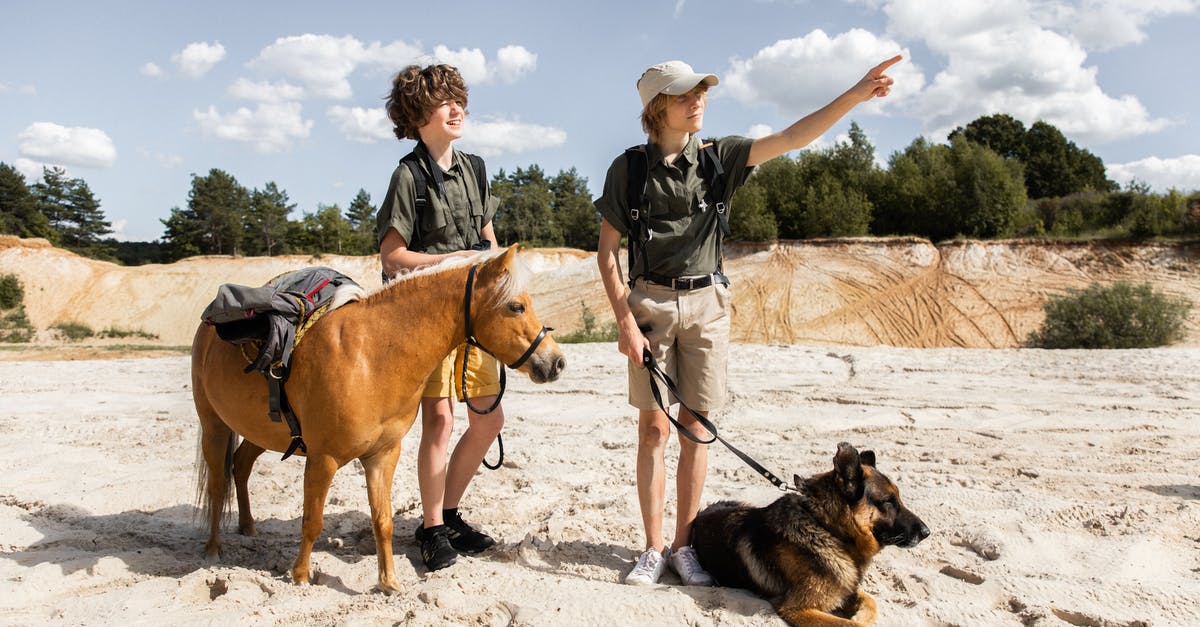What is the point of Speed-changing moves in Pokemon?

I've been playing the Pokemon games for many generations (though not much in the competitive/PVP arena). In all that time, I've never quite wrapped my head around the proliferation of moves that either buff your speed or debuff your opponent's -- especially the latter.
Obviously a high Speed stat is almost always good; getting the first hit usually means you win the fight. I'm not talking about that. And a move that attacks and buffs/debuffs speed is still an attack, so that's fine. I'm talking specifically about moves that don't do anything except change speed, like Agility or Cotton Spore.
I can see a few specific scenarios where it's useful. Setting up for another move that specifically benefits from a Speed differential, like Gyro Ball or similar; being able to (usually) see what move Copycat is going to copy; Baton Passing to a slower teammate. I can see using Agility to set up a sweeper, though taking a turn just to speed up seems like a risky proposition for a glass cannon, and slowing your enemy down isn't really going to accomplish much in that case.
Outside of those situations, I can't see how adjusting Speed is useful. If I was acting first anyway, then it's useless, and if I go second and the move changes initiative order, I haven't actually altered anything; we're still basically trading hits. Yet, there are so many speed-modifying moves (which I almost always forget as soon as possible) that I feel like there's something I'm missing.
Is there some strategy or method that I'm overlooking here?
Best Answer
In competitive battling the most common three moves that influence speed only are:
- Trick Room (Reverse initiative for 5 turns)
- Tailwind (Double your team's speed for 3-4 turns)
- Sticky Web (Any entering non-flying non-levitating mon on the opposing side will get a speed drops)
All of them have the same idea - you set up the speed-up/slow-down with one Pokemon and when it faints you summon your sweeper (a Pokemon with set of moves / ability / item whose purpose is to defeat all or almost all of enemies Pokemon).
The reason it works is that in most cases there is a big tradeoff between power and natural speed. For example, if you know your Smeargle will setup Tailwind or Sticky Web you can invest all EVs into attack and health which makes it that more likely that your Pokemon can outlive any other while still outspeeding.
A similar point can be made with Agility or Rock Polish - if you already have a Pokemon that can one-hit-ko or two hit KO an opponent, setting up being the first to hit will be useful in the long run.
For example, let's say your opponent has a Fire/Flying Pokemon out and you send out a Rock type haymaker. You can be almost certain that your opponent will switch out, meaning you have a free turn to set up a Rock Polish.
The reason it's not as popular in competitive battling is that setting up one boost to attack and one boost to speed with Dragon Dance is much better than two boost to speed only - it can transform a two-hit-ko into an one-hit-ko which takes us to the final point:
Action Economy - if you get to take a turn while your opponent doesn't, it's severely beneficial. It's what happens if you either OHKO or put your opponent to sleep when you're faster. (In the second case, in a way you both skip a turn but it's still beneficial if the opposing Pokemon doesn't wake up immediately)
Pictures about "What is the point of Speed-changing moves in Pokemon?"



What is the benefit of speed in Pokémon?
You can gain any number of advantages when your Pok\xe9mon has more Speed than your opponent's: you can potentially knock their Pok\xe9mon out before it moves, you can reduce the damage they will deal, or you can give your Pok\xe9mon one last turn to eke out damage before being knocked out.Is speed boost a good ability?
Speed Boost, which sees a Pok\xe9mon gain a +1 to its Speed stat at the end of every turn, is probably among the most effective (along with the likes of Intimidate).How much does speed increase Pokémon?
Speed Boost is a Pokemon Ability that increases the user's Speed stat by one stage (50% / 1.5x) each turn in battle. This does not include the turn used to switch into battle. The Speed will raise all the way to 300% (4x) after six turns.What is the fastest Pokémon move?
Generation VPriorityMoves+2ExtremeSpeed, Feint+1Ally Switch, Aqua Jet, Bide, Bullet Punch, Ice Shard, Mach Punch, Quick Attack, Shadow Sneak, Sucker Punch, Vacuum Wave0All other moves, shifting-1Vital Throw9 more rowsHow To Learn And Change Moves in Pokemon Legends Arceus
More answers regarding what is the point of Speed-changing moves in Pokemon?
Answer 2
You are correct in that, in a 1v1 fight without switching, using Agility or another move on a slower Pokemon and then becoming faster on it does not affect the exchange of moves. As you said, the Speed advantage is negated by the turn you spent using said move. However, Pokemon battles involve two teams. Though your Pokemon used Agility to gain a Speed advantage over that Pokemon, it may now also have a Speed advantage over other Pokemon too. This can provide more benefit to using the Speed move than simply that one turn, gaining multiple turns, including key turns that can be the difference between getting a KO and being KOed. Consider the following examples:
Jolteon vs Golem. Turn 1: Jolteon uses Double Kick, Golem uses Rock Polish. Turn 2: Golem uses Earthquake which scores a OHKO (one-hit KO). Opponent switches in Infernape. Turn 3: Golem uses Earthquake and scores a OHKO on Infernape. Due to using Rock Polish on turn 1, Golem gained a speed advantage over both Jolteon and Infernape. This gave it two extra turns (one against Jolteon and anotehr against Infernape), at the expense of one turn of using the move, effectively awarding the player one net extra turn. This is very notable in the Infernape scenario, since otherwise Infernape would move first and potentially OHKO Golem instead. This scenario occurs frequently with "sweeper" Pokemon in singles, since by outspeeding other Pokemon, it is easier to finish them off before they attack, potentially winning you the game if none of them can attack before being KOed by your faster Pokemon.
Jolteon vs Golem. Turn 1: Jolteon switches out to Gyarados, Golem uses Rock Polish. If Golem had instead used Earthquake, that attack would have not affected Gyarados. Then next turn Gyarados could threaten Waterfall or another Water-type attack against Golem. But because Golem used Rock Polish, it can now outspeed Gyarados and threaten it first with a super-effective Rock-type move. That is one of the risks of using offensive moves, in that you may not get much benefit from doing so if it deals little or no damage to the opposing Pokemon, whereas Rock Polish Speed boost remains the same regards of the opposing Pokemon.
With moves like Cotton Spore, the opposite scenarios apply, where that the opposing Pokemon may then be slower than multiple of your Pokemon, which may cost them multiple turns. Moves like Cotton Spore are generally considered less effective than Agility though, since your opponent can remove the nerfs by switching out (whereas you can keep your Speed boosts by not switching out).
The above points were focused on single battles, which I'm assuming you are focusing on as you said you haven't played many competitive / PvP battles (official Pokemon tournaments are generally double battles). The same point does apply for Doubles, with one Pokemon now being faster/slower than multiple Pokemon. However, moves like Agility and Cotton Spore are generally less effective in doubles, since it is harder to take advantage of the boost (by virtue of there being four Pokemon on the field instead of two, which makes it harder for one Pokemon alone to establish board control). Competitive players instead tend to use moves like Tailwind and Trick Room and Tailwind instead in these settings, which affect multiple Pokemon simultaneously.
Answer 3
A strategy that hasn't been mentioned yet is trying to make the opposing Pokémon flinch. Flinching can be a powerful effect because it completely prevents the opposing Pokémon from taking any action, and can be inflicted by several moves and two items, which means any Pokémon has potential access to the strategy.
However, a Pokémon will only flinch if it moves second, which means the strategy only works if your Pokémon is faster. Having a speed-increasing or opponent-slowing move can increase the number of Pokémon that your flinch strategy can be employed against, and is therefore worth the move slot and turn needed to use it.
Answer 4
Adjusting your speed can be extremely powerful. Especially tanks, Pokemon with a high HP and attack stat, usually have a low speed to balance them out. The first thing that comes to mind is Rhyperior, which has access to Rock Polish. Imagine switching Rhyperior into a advantageous matchup, using Rock Polish once during the switch. This can give you quite an edge over your opponent as you can now attack faster than he can unless he switched into a sweeper, which usually still won't be able to kill Rhyperior in a single hit, in which case you can put another Rock Polish on top, which means you are now faster than 99% of the pokemon available, with the exception of a few select ones like Deoxys-S, Regieleki or other speed monsters.
However, in general, these moves are not as popular, mostly because you have to sacrifice an entire turn to MAYBE get another one. This is what we would commonly call "action advantage". Imagine you using in a Rhyperior, while your opponent uses a Golem. Golem has a slight speed advantage over Rhyperior. So, if you use Rock Polish, he will attack first, however, you will attack first in the next turn AND have an advantage for future turns. But this is very situational and it doesn't make you more powerful. Your opponent can easiely wall you with a Pokemon and you will have no choice than to switch out, basically wasting your entire boosts (unless you use something like Baton Pass, which again, is very situational). This is why moves like Swords Dance/Nasty Plot are more popular. They actually make you more dangerous since a 6x atk boost sweeper can still oneshot a wall. Another popular move is Dragon Dance, since it upgrades your speed as well as your attack.
So, while these moves definitely have a reason to exist and are used occasionally, it's mostly done in casual or against inexperienced players. Experienced players usually have a good answer against these, so it's rarely worth to go for them.
Answer 5
You can build a set that has more than the obvious speed benefit, like for Magearna:
- Stored Power
- Calm Mind
- Shift Gear / Agility
- Draining Kiss
Stored Power deals damage. It normally has a base power of 20, but gains 20 power for every increased stat stage the user has. Its maximum possible base power is 860.
Answer 6
One (niche) use for speed boosting moves that is only relevant in Generation One is for One Hit KO (OHKO) moves. In Generation One, the OHKO moves (Fissure, Horn Drill, Guillotine) fail unless you are faster than the opponent. Thus, if your strategy relies on these moves, you need to be faster than the opponent - speed boosting and lowering moves are one way to achieve this. As an example, look at the Gambler in Pokémon Stadium's Prime Cup, Master Ball level - all six of his Pokémon feature a speed control move and an OHKO move. (Dragonite has Agility/Thunder Wave and Horn Drill, Arbok has Glare and Fissure, Blastoise has Body Slam and Fissure, Slowbro has Thunderwave and Fissure, Dugtrio has Body Slam and Fissure, and Tauros has Body Slam/Thunder and Fissure/Horn Drill).
Sources: Stack Exchange - This article follows the attribution requirements of Stack Exchange and is licensed under CC BY-SA 3.0.
Images: Katerina Holmes, EKATERINA BOLOVTSOVA, Kammeran Gonzalez-Keola, Andrea Piacquadio
